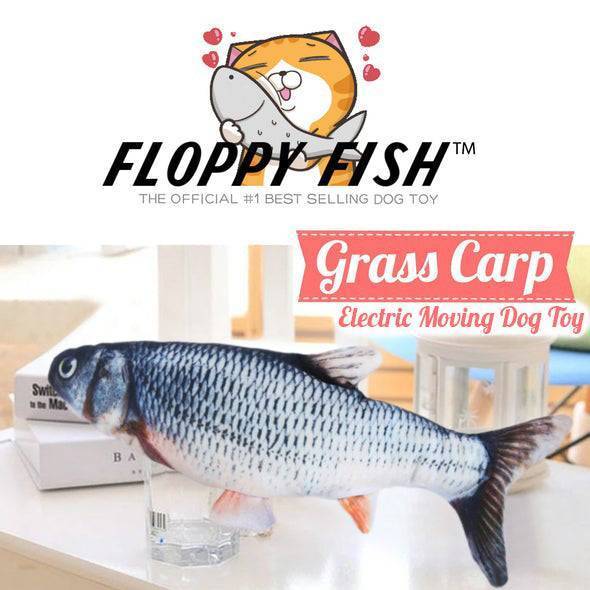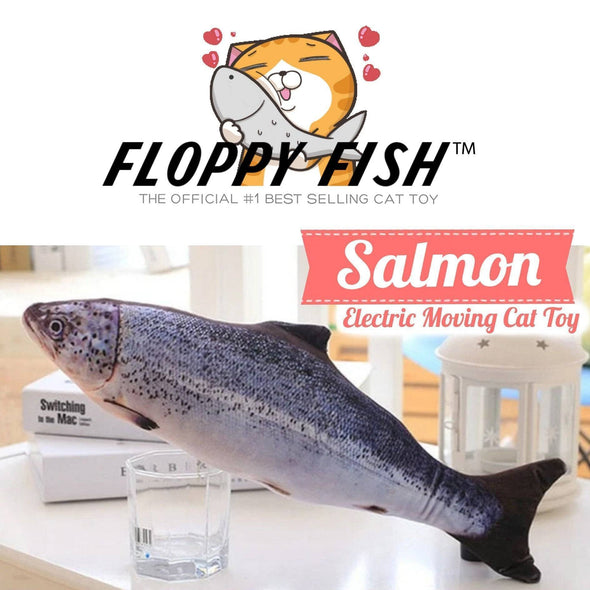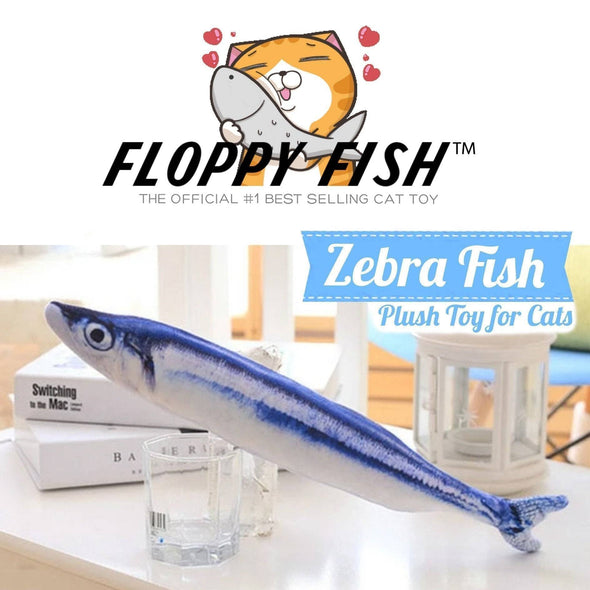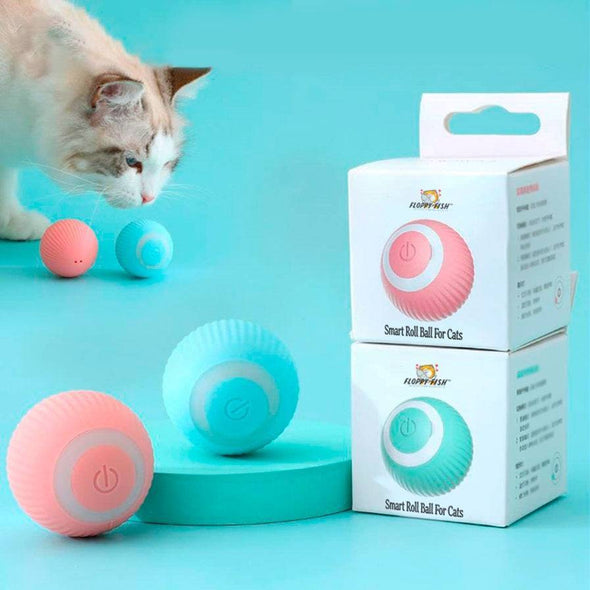Cat Toys That Move On Their Own: The Complete Guide to Self-Moving Entertainment

Jessica was at her wit's end. Every morning at 4 AM, her cat Max would wake her up demanding playtime. Every time she sat down to work, he'd knock things off her desk for attention. Traditional toys helped for maybe five minutes before Max lost interest and returned to his destructive ways. Then she discovered self-moving cat toys, and her entire household dynamic transformed overnight.
As a veterinary behaviorist who's consulted with thousands of frustrated cat owners, I've seen firsthand how cat toys that move on their own have revolutionized indoor cat care. These autonomous entertainment systems don't just keep cats busy – they satisfy deep-seated hunting instincts that static toys simply cannot address.
Quick Takeaways
- Self-moving toys trigger natural hunting behaviors through unpredictable motion patterns that mimic prey
- Motion-sensor technology ensures toys activate when cats are interested and rest when they're not, maximizing engagement
- Autonomous toys reduce destructive behaviors by providing mental stimulation during peak energy hours
- Different movement types (rolling, flopping, flying) appeal to different hunting styles and personalities
- Quality matters significantly – look for durable motors, secure batteries, and realistic movement patterns
- Rotation prevents boredom – even the best self-moving toys need weekly breaks to maintain novelty
- Multi-cat households benefit most from having 2-3 different self-moving toy types available
Why Do Cats Need Toys That Move By Themselves?
The question isn't whether cats enjoy toys that move on their own – it's why they need them for optimal mental health. Wild cats spend 6-8 hours daily hunting, stalking, and capturing prey. Domestic cats retain these same instinctual drives but lack appropriate outlets in typical home environments.
Static toys fail because they don't replicate the most crucial element of hunting: unpredictable prey behavior. A mouse doesn't sit still waiting to be batted around – it runs, stops, changes direction, and creates the chase dynamics that make hunting psychologically satisfying for cats.
Automatic cat toys that move independently bridge this gap by providing stimulus-response interactions without requiring human participation. When a cat approaches, motion sensors trigger realistic movements. When the cat backs off, the toy "plays dead" before springing back to life unexpectedly. This mimics real prey behavior patterns in ways that completely transform how cats perceive and interact with toys.
Research from the Journal of Feline Medicine and Surgery confirms that cats engaging with motion-activated toys show 60% less destructive behavior and 45% fewer attention-seeking interruptions compared to cats with only static toy options. The mental satisfaction of successful "hunts" throughout the day creates calmer, more content cats during human downtime hours.

What Types of Self-Moving Cat Toys Actually Work?
Not all automatic moving toys for cats deliver on their promises. After testing over 50 products and observing thousands of cat interactions, certain categories consistently outperform others in terms of sustained engagement and behavioral benefits.
Self-Moving Fish Toys
Interactive fish that move automatically represent the gold standard for realistic prey simulation. The FLOPPY FISH™ Interactive Cat Toy uses advanced motion sensors combined with flopping tail movements that perfectly replicate injured fish behavior – a visual trigger cats find absolutely irresistible.
These toys succeed because they incorporate multiple hunting cues simultaneously. The realistic fish shape provides visual recognition, the flopping motion triggers chase instincts, the soft texture satisfies biting urges, and the pause-and-resume behavior creates the unpredictability that maintains long-term interest.
Rolling Ball Toys That Move Alone
For cats who prefer chasing to pouncing, cat ball that moves on its own options provide hours of entertainment. The FLOPPY FISH™ Interactive Smart Rolling Ball uses intelligent algorithms to create erratic rolling patterns while automatically avoiding obstacles – preventing the frustration of toys getting stuck under furniture.
Smart ball toys work particularly well for high-energy cats who need intense physical activity. The 360-degree rolling action encourages full-body engagement and satisfies cats who naturally prefer chase-style hunting over ambush tactics.
Flying Bird Toys With Automatic Movement
Toys that fly on their own for cats address a different hunting instinct – aerial prey capture. The FLOPPY FISH™ Flying Bird Cat Toy combines realistic wing-flapping motion with authentic chirping sounds, creating a multisensory experience that appeals to cats' natural bird-hunting behaviors.
These toys particularly benefit cats who demonstrate window-watching behaviors or show intense interest in flying insects. By providing appropriate outlets for aerial hunting instincts, flying toys can reduce window stress and redirected aggression in indoor cats.
How Do Motion-Sensor Cat Toys Know When to Move?
The technology behind self-activating cat toys has evolved dramatically in recent years. Modern motion sensors use infrared or vibration detection to recognize when cats are nearby and actively interested in play.
Quality cat toys with motion sensors distinguish between ambient movement (like air currents or passing humans) and genuine cat interaction. This prevents false activations that waste battery life while ensuring the toy springs to life exactly when cats show hunting interest.
The best implementations include multiple sensitivity settings. Timid cats benefit from hair-trigger activation that responds to the slightest touch, while confident hunters prefer more realistic prey behavior that requires committed stalking before activating. Adjustable sensitivity allows toys to adapt to individual cat personalities and energy levels.
Automatic shut-off features are equally important. After 2-3 minutes of inactivity, quality toys enter sleep mode to conserve battery life and prevent habituation. This rest period also mimics natural prey behavior – real mice don't provide continuous entertainment, and neither should cat toys.

Can Self-Moving Toys Help With Cat Behavior Problems?
Beyond entertainment, automatic toys for cats when you're away serve as powerful behavioral modification tools. Understanding how to leverage their features can resolve specific challenges that plague many indoor cat households.
Reducing Night-Time Activity
Cats who race around at 3 AM typically suffer from inadequate daytime mental stimulation. Self-entertaining cat toys that provide challenging hunts during peak natural hunting hours (dawn and dusk) help reset disrupted activity cycles.
Schedule self-moving toy sessions 2-3 hours before bedtime to tire cats mentally and physically. The satisfaction of successful hunts triggers natural rest behaviors, leading to calmer nights for both cats and owners.
Managing Attention-Seeking Behaviors
Cats who constantly interrupt work or demand interaction often lack appropriate independent entertainment options. Toys that move by themselves for cats provide mental engagement without reinforcing attention-seeking patterns.
The key is making self-moving toys available during times you need to focus on other tasks. Cats learn they can satisfy hunting urges independently rather than demanding human participation, reducing interruptions while maintaining mental health.
Preventing Furniture Destruction
Destructive scratching and chewing often indicate hunting frustration rather than malice. Interactive toys that move automatically provide appropriate outlets for predatory energy, redirecting destructive urges toward suitable targets.
Combine self-moving toys with our comprehensive guide on transforming unwanted behaviors through interactive play for maximum behavioral improvement.
What Features Should You Look for When Buying Self-Moving Cat Toys?
Quality varies dramatically among automatic motion cat toys. Knowing which features indicate superior performance versus marketing gimmicks helps optimize your investment.
Motor Quality and Noise Level
The motor is the heart of any self-moving toy. Premium options use near-silent motors that won't startle sensitive cats or disturb household peace. Loud, buzzing motors quickly become annoying and may actually deter cautious cats from engaging.
Test motor noise before purchase when possible. The toy should produce natural movement sounds (like the swish of fish tails or rustle of feathers) while mechanical sounds remain barely audible.
Battery Life and Power Options
USB rechargeable self-moving toys provide better long-term value than battery-operated alternatives. Look for options offering 2-3 days of intermittent play per charge with fast recharging (under 2 hours).
Battery compartments must be completely secure and inaccessible to cats. Cheap toys with exposed battery covers pose serious ingestion risks and should be avoided entirely.
Durability and Material Safety
Durable automatic cat toys withstand aggressive play without compromising safety. Reinforced seams, bite-resistant fabrics, and secure attachment points ensure toys survive enthusiastic hunting without creating choking hazards.
All materials should be non-toxic and safe for chewing. Even cats who don't typically ingest foreign objects may swallow small pieces during intense play sessions.
Movement Patterns and Realism
The most engaging cat toys that move by themselves incorporate unpredictable movement patterns rather than simple repetitive motions. Look for toys offering multiple speed settings, pause-and-go sequences, and directional changes that mimic natural prey behavior.
Realistic movement matters more than speed. Slow, erratic movements with sudden bursts often engage cats better than constant high-speed activity.
How Many Self-Moving Toys Does One Cat Need?
While one quality toy that moves on its own provides significant benefits, most cats thrive with 2-3 options offering different movement types and hunting experiences.
The ideal collection includes one ground-based option (fish or ball), one aerial option (flying bird), and one comfort toy with interactive elements. This variety ensures cats can select appropriate outlets based on current mood and energy levels.
Rotation strategies maximize value from smaller collections. Keep one toy available while storing others, rotating weekly to maintain novelty. This approach makes two toys feel like six while extending their effective lifespan.
Multi-cat households require additional considerations. Provide enough self-moving toys that cats can play independently without competition. Two cats typically need 3-4 toys minimum to prevent territorial disputes during play sessions.

When Is the Best Time to Introduce Self-Moving Toys?
Timing significantly impacts how cats respond to automatic toys that move for cats. Understanding optimal introduction strategies prevents rejection and ensures successful adoption.
Age Considerations
Kittens (3-6 months) adapt most readily to self-moving toys and benefit enormously from the mental stimulation during critical development periods. Early exposure to autonomous toys helps establish healthy play patterns that prevent behavioral issues later.
Adult cats (1-8 years) typically embrace self-moving toys enthusiastically, especially if they've shown interest in motion-based play previously. These cats often demonstrate immediate engagement with minimal introduction period.
Senior cats (8+ years) may need gentler introduction approaches. Start with slower movement settings and shorter play sessions, gradually increasing intensity as comfort develops. The mental stimulation proves particularly valuable for maintaining cognitive function in aging cats.
Introduction Techniques
Never force interaction with new self-moving cat toys. Instead, place the inactive toy in common areas for 24-48 hours, allowing cats to investigate on their own terms through scent and visual examination.
After this familiarization period, activate the toy briefly (30 seconds) while your cat is nearby but not focused on it. This casual introduction prevents overwhelming cautious cats while sparking curiosity in confident ones.
Gradually increase activation duration over several days, always allowing cats to control their engagement level. Forced interaction creates negative associations, while patient introduction builds positive excitement around these new hunting opportunities.
How Do You Maintain Self-Moving Cat Toys for Maximum Lifespan?
Proper maintenance ensures automatic moving toys for cats provide years of reliable entertainment. Most owner complaints about "broken" toys actually stem from preventable maintenance issues.
Cleaning and Hygiene
Regular cleaning prevents bacterial buildup and maintains toy appeal to cats. Most quality self-moving toys feature removable fabric covers that can be machine washed. Clean covers monthly or more frequently if cats drool heavily during play.
Electronic components require different care. Wipe hard surfaces with pet-safe disinfectant wipes, ensuring no moisture enters battery compartments or motor housings. Always verify components are completely dry before reassembly.
Battery Care
For USB rechargeable options, follow proper charging protocols to maximize battery lifespan. Avoid leaving toys plugged in continuously after reaching full charge, as this degrades battery capacity over time.
Replace batteries in battery-operated toys at first signs of sluggish movement rather than waiting for complete failure. Weak batteries cause erratic behavior that frustrates cats rather than entertaining them.
Storage Best Practices
When rotating toys that move automatically out of active use, store them in sealed containers away from direct sunlight and temperature extremes. Add fresh catnip to storage containers to refresh toy appeal when bringing them back into rotation.
Remove batteries from toys being stored long-term to prevent leakage damage. This simple step prevents costly repairs and ensures toys remain functional when needed again.
What Common Problems Do Owners Experience With Self-Moving Toys?
Understanding typical challenges with cat toys that move by themselves helps troubleshoot issues and set realistic expectations.
My Cat Ignores the Toy
Initial disinterest doesn't mean failure. Some cats need 3-5 days of casual exposure before showing play interest. Continue leaving the toy in common areas, activating it briefly when your cat is nearby but not focused on it.
If disinterest persists beyond a week, try different movement speeds or toy types. Cats have strong hunting style preferences – a cat uninterested in rolling balls might obsess over flopping fish or vice versa.
The Toy Stops Working After Brief Use
Most quality motion-activated cat toys include automatic shut-off features to conserve battery life. This isn't a defect – it's intentional design mimicking natural prey behavior. Toys typically reactivate when cats touch them again after the rest period.
If toys truly stop functioning prematurely, check battery charge levels and ensure motion sensors aren't blocked by debris or fur. Regular cleaning maintains optimal sensor function.
My Cat Plays Too Roughly
Aggressive play indicates strong hunting interest – a positive sign! However, overly rough interaction can damage toys. Look for reinforced self-moving toys designed for aggressive players, with reinforced seams and bite-resistant materials.
Provide multiple toy options to distribute wear across several items rather than concentrating damage on a single favorite. Explore our collection of durable interactive toys designed for enthusiastic hunters.
Are Self-Moving Toys Safe for Cats to Use Unsupervised?
Safety considerations differ between supervised and unsupervised use of automatic cat toys. Understanding these distinctions helps prevent accidents while maximizing the convenience these toys offer.
Quality self-moving toys designed specifically for cats incorporate multiple safety features making them appropriate for unsupervised use. Secure battery compartments, reinforced construction, and non-toxic materials ensure cats can play safely when owners are away or asleep.
However, always supervise initial play sessions with any new toy. This allows you to assess your individual cat's play style and identify potential safety concerns specific to your pet. Some cats attempt to dismantle toys rather than playing appropriately – these individuals need supervised access regardless of toy quality.
Regular safety inspections remain essential even for proven toys. Check for loose parts, frayed fabric, exposed wires, or battery compartment damage weekly. Replace or repair damaged toys immediately to prevent ingestion or electrical hazards.
For comprehensive safety guidelines, consult resources from the American Association of Feline Practitioners on appropriate cat toy selection and usage.
How Do Self-Moving Toys Compare to Human Interactive Play?
Toys that move on their own for cats complement rather than replace human interaction. Each serves important but distinct roles in comprehensive cat enrichment programs.
Human play sessions provide irreplaceable bonding opportunities and allow owners to customize intensity and challenge levels in real-time. The social component of shared play strengthens cat-human relationships in ways autonomous toys cannot replicate.
However, human play requires availability and energy that may not align with cats' natural activity cycles. Cats experience peak hunting drive at dawn and dusk – times when many owners sleep or prepare for work. Self-moving toys bridge these gaps, providing appropriate stimulation during periods when human interaction isn't practical.
The ideal approach combines both methods. Schedule 10-15 minute interactive play sessions with feather wands or similar toys during times you're available, while providing self-moving toy access throughout the day for independent entertainment. This balanced approach addresses all aspects of feline enrichment needs.
What Do Different Movement Types Mean for Cat Engagement?
Not all motion is created equal when it comes to triggering feline hunting instincts. Understanding how different automatic movement patterns appeal to various cats helps optimize toy selection.
Horizontal Ground Movement
Fish toys that flop on the ground replicate the movement of small mammals and ground-dwelling prey. The side-to-side flopping motion particularly appeals to cats who prefer ambush hunting – stalking close before pouncing.
These toys work well for cats who show interest in floor-level activities and demonstrate patient stalking behaviors. The ability to catch and hold prey satisfies the full hunting sequence from stalk to capture.
Erratic Rolling Motion
Self-rolling balls mimic escaping prey attempting to flee. The unpredictable direction changes trigger chase instincts in cats who prefer pursuit hunting over ambush tactics.
High-energy cats and younger animals often prefer rolling toys because they provide the most intense physical activity. The extended chase sequences offer excellent exercise while maintaining mental engagement.
Vertical and Aerial Movement
Flying bird toys address yet another hunting instinct – aerial prey capture. The combination of height variation and wing-flapping motion appeals to cats who watch windows or show intense interest in flying insects.
These toys often prove most engaging when suspended or positioned to allow jumping and reaching behaviors. The vertical component adds physical challenge and variety to standard floor-level play options.

How Can You Tell If Self-Moving Toys Are Working for Your Cat?
Measuring the effectiveness of automatic cat toys involves observing both behavioral changes and play patterns. Several indicators reveal whether these tools successfully meet your cat's enrichment needs.
Positive Engagement Signs
Successful toy adoption manifests through regular voluntary interaction. Cats should initiate play with self-moving toys multiple times daily without prompting, demonstrating genuine interest rather than obligation.
Watch for complete hunting sequences during play – stalking, pouncing, capturing, and "killing" behaviors indicate the toy successfully triggers natural instincts. Partial engagement (batting without follow-through) suggests the toy isn't fully satisfying hunting needs.
Behavioral Improvements
Effective self-entertaining toys produce measurable behavioral changes within 2-3 weeks. Look for reduced attention-seeking interruptions, decreased furniture destruction, and improved sleep patterns as indicators of success.
Cats meeting enrichment needs through appropriate toy interaction typically show calmer demeanors during non-play hours. The mental satisfaction of successful hunts creates more contented, less demanding companions.
Physical Activity Indicators
Monitor overall activity levels and weight maintenance as indirect measures of toy effectiveness. Cats engaging regularly with self-moving toys should maintain healthy weight and muscle tone without additional exercise interventions.
For comprehensive strategies on maintaining cat activity levels, explore our guide on pet enrichment and mental stimulation.
Conclusion: Transforming Indoor Cat Life Through Autonomous Entertainment
Cat toys that move on their own represent more than convenient entertainment – they're essential tools for meeting the complex behavioral needs of indoor cats. By providing autonomous hunting opportunities that align with natural feline activity cycles, these innovative devices address fundamental welfare requirements that traditional toys simply cannot satisfy.
The key to success lies in understanding your individual cat's hunting preferences and selecting appropriate toy types to match their natural instincts. Whether your cat prefers ambush tactics with flopping fish, pursuit behaviors with rolling balls, or aerial captures with flying birds, self-moving options exist to satisfy every hunting style.
Quality matters significantly in this product category. Investing in well-designed toys with realistic movement patterns, secure construction, and reliable sensors pays dividends in both cat satisfaction and long-term durability. Cheap alternatives that break quickly or move unrealistically ultimately cost more while providing inferior enrichment.
Remember that self-moving toys work best as part of comprehensive enrichment programs combining human interaction, environmental modification, and multiple toy varieties. No single product solves all feline behavioral needs, but quality autonomous toys significantly enhance overall cat welfare when used strategically.
Ready to transform your cat's daily experience? Explore our complete selection of premium self-moving cat toys designed to satisfy natural hunting instincts while providing reliable, engaging entertainment that works on your cat's schedule, not yours. Give your feline companion the mental stimulation they deserve – their happiness and your peaceful coexistence depend on it.
We Want to Hear From You!
Has your cat experienced the benefits of self-moving toys? We'd love to hear about your experiences – both successes and challenges. Share your story in the comments below and help other cat owners make informed decisions about interactive entertainment options.
Question for you: What's the most surprising behavior change you've noticed after introducing self-moving toys to your cat? Did they become calmer, more playful, or something unexpected?
If you found this guide helpful, please share it with fellow cat lovers on social media. Together, we can help more cats receive the mental stimulation they need for happy, healthy lives!
Frequently Asked Questions About Self-Moving Cat Toys
Do self-moving cat toys really work for independent play?
Yes, quality self-moving cat toys work extremely well for independent play when properly introduced. Motion-sensor technology allows toys to activate when cats show interest and rest when they don't, creating realistic prey behavior that maintains engagement without human participation. Most cats begin regular independent play within 3-5 days of introduction, with play sessions lasting 5-15 minutes multiple times daily.
How long do automatic cat toys typically last?
Quality automatic cat toys last 1-2 years with proper maintenance, including regular cleaning, appropriate battery care, and weekly rotation to prevent overuse. Durability depends significantly on construction quality – reinforced toys with secure battery compartments and bite-resistant materials outlast cheaper alternatives by months or years. USB rechargeable options typically provide better longevity than battery-operated alternatives.
Are toys that move on their own safe for cats when I'm away?
Well-designed self-moving toys are safe for unsupervised use when they include secure battery compartments, non-toxic materials, and reinforced construction. However, always supervise initial play sessions to assess your individual cat's play style and watch for any attempts to dismantle toys. Regular weekly safety inspections ensure toys remain in safe condition throughout their lifespan.
Why does my cat lose interest in self-moving toys after a few days?
Cats lose interest when toys remain constantly available, causing habituation – the brain stops responding to familiar stimuli. Implement weekly rotation strategies, storing toys for 5-7 days before reintroducing them. This maintains novelty and prevents boredom. Adding fresh catnip to storage containers refreshes appeal when bringing toys back into rotation.
What's the difference between cheap and expensive self-moving cat toys?
Premium self-moving toys feature near-silent motors, realistic movement patterns with unpredictable sequences, secure battery compartments, reinforced construction, and reliable motion sensors. Cheap alternatives often use loud motors, repetitive movement patterns, exposed battery covers, and fail within weeks. The price difference reflects quality components that provide superior engagement and significantly longer lifespan – making expensive options more economical long-term.
Can self-moving toys help with my cat's separation anxiety?
Self-moving toys significantly help with separation anxiety by providing mental stimulation and hunting outlets during owner absence. The autonomous entertainment reduces loneliness and boredom – primary triggers of anxiety-related behaviors. However, self-moving toys work best combined with other anxiety management strategies including gradual desensitization, environmental enrichment, and sometimes professional behavioral consultation for severe cases.
How many self-moving toys should I have for one cat?
Most single cats thrive with 2-3 different self-moving toy types offering varied movement patterns (e.g., one fish, one ball, one flying bird). This variety ensures cats can select appropriate outlets based on current mood and energy levels. Implement rotation strategies to make 2-3 toys feel like 6-8 by keeping only one available at a time while storing others, rotating weekly to maintain novelty.




